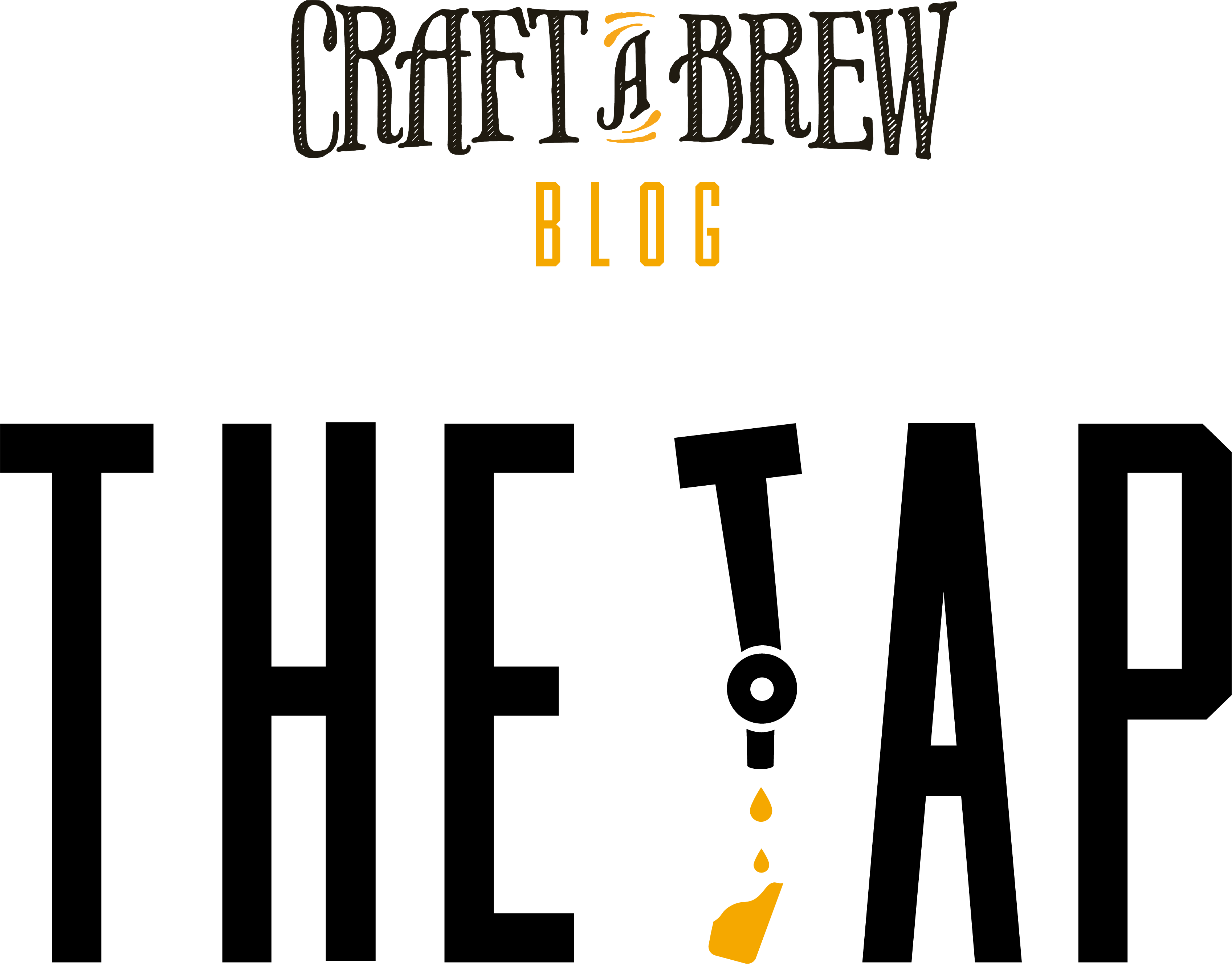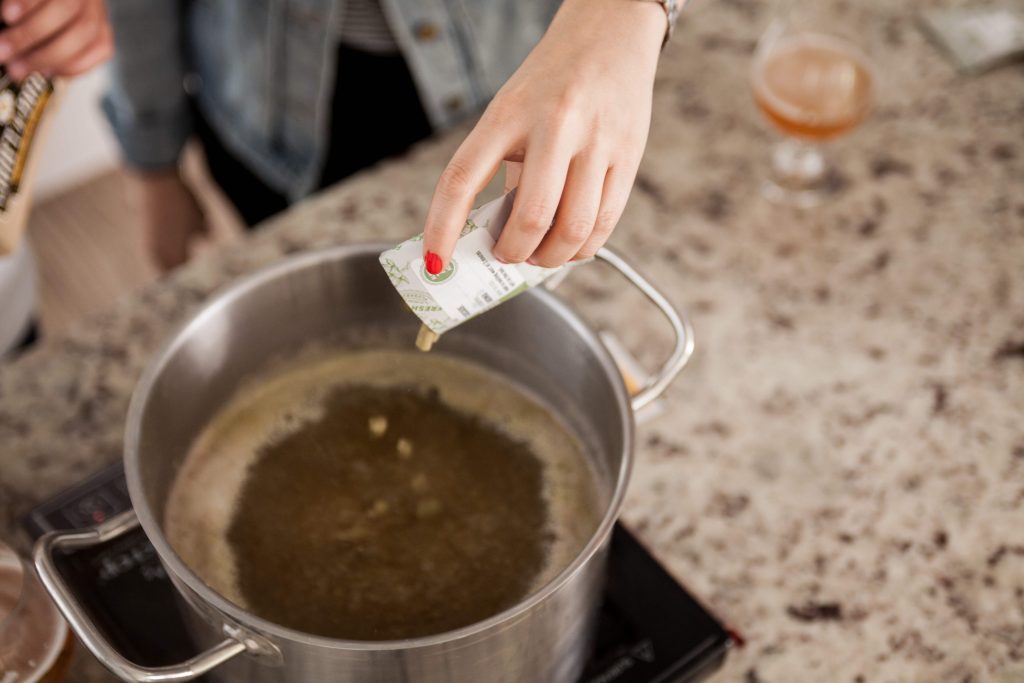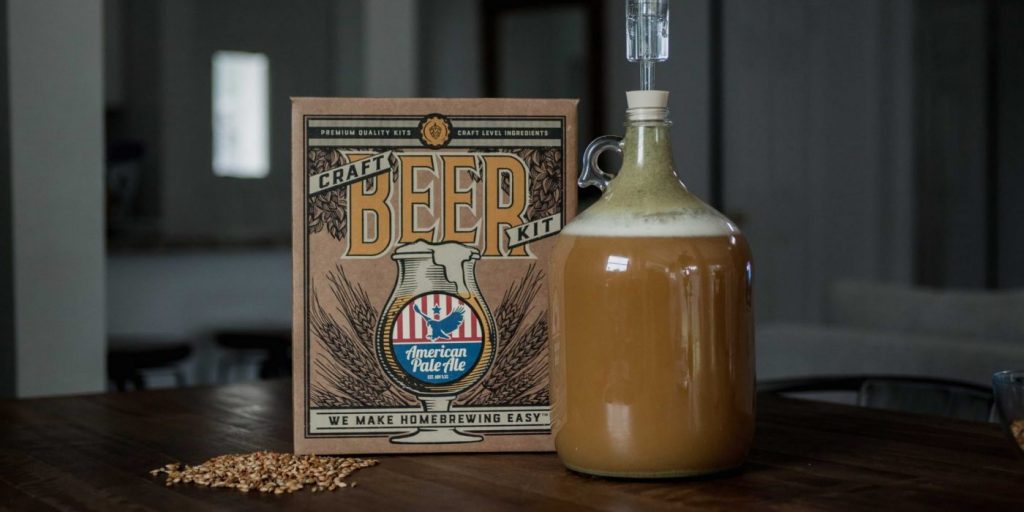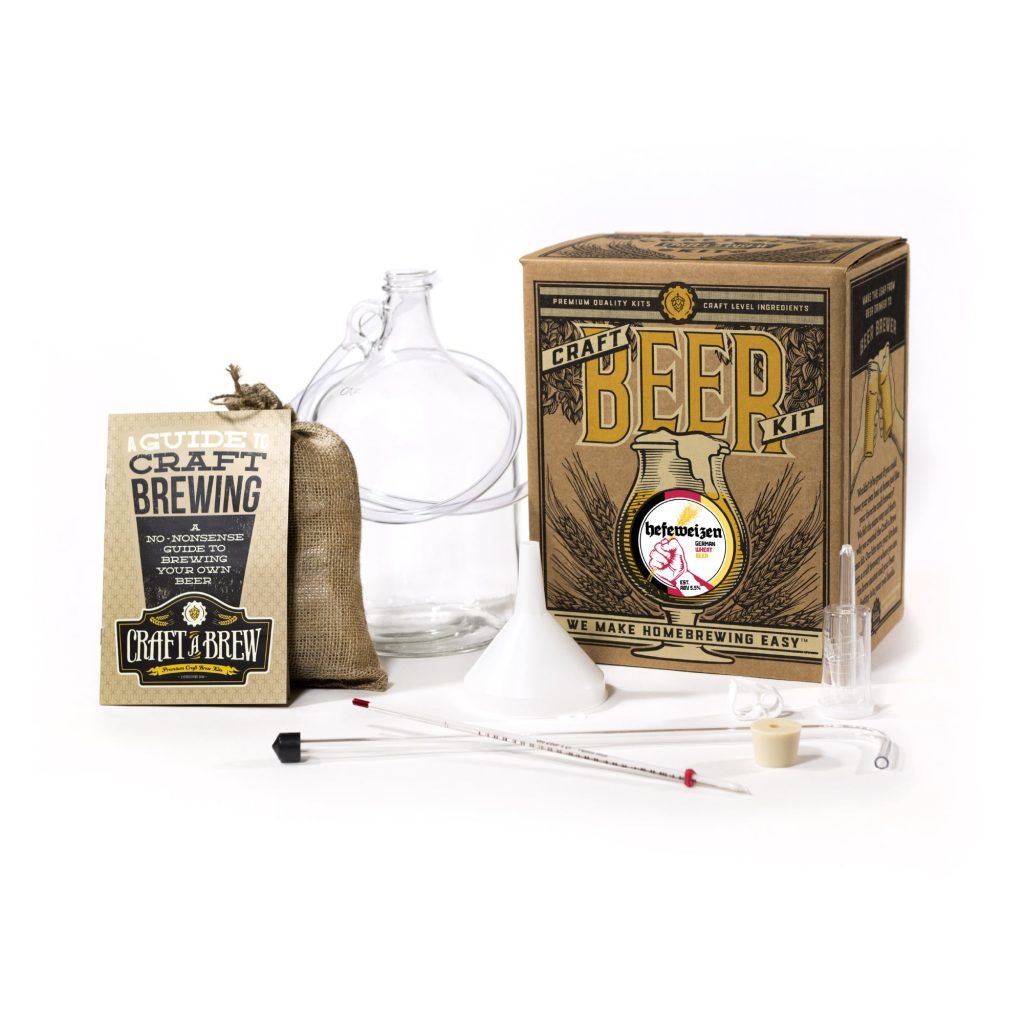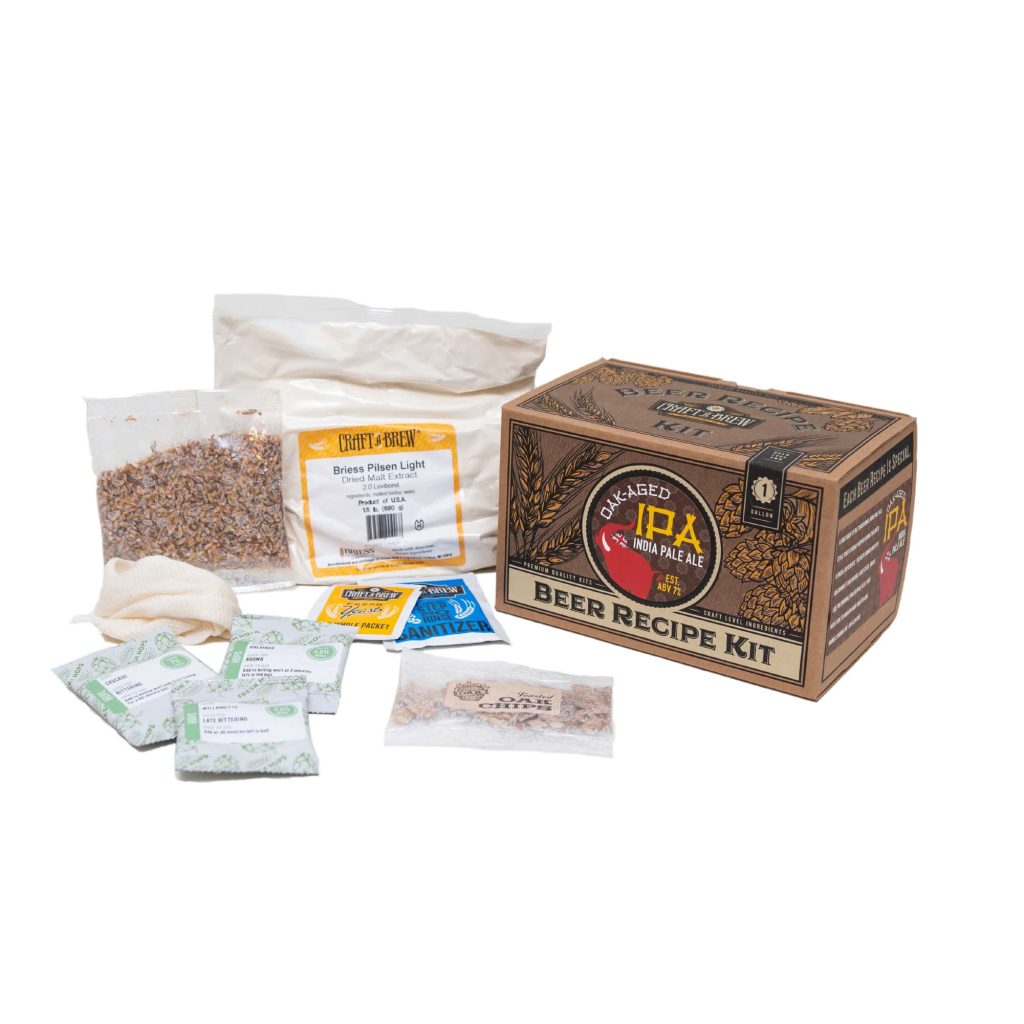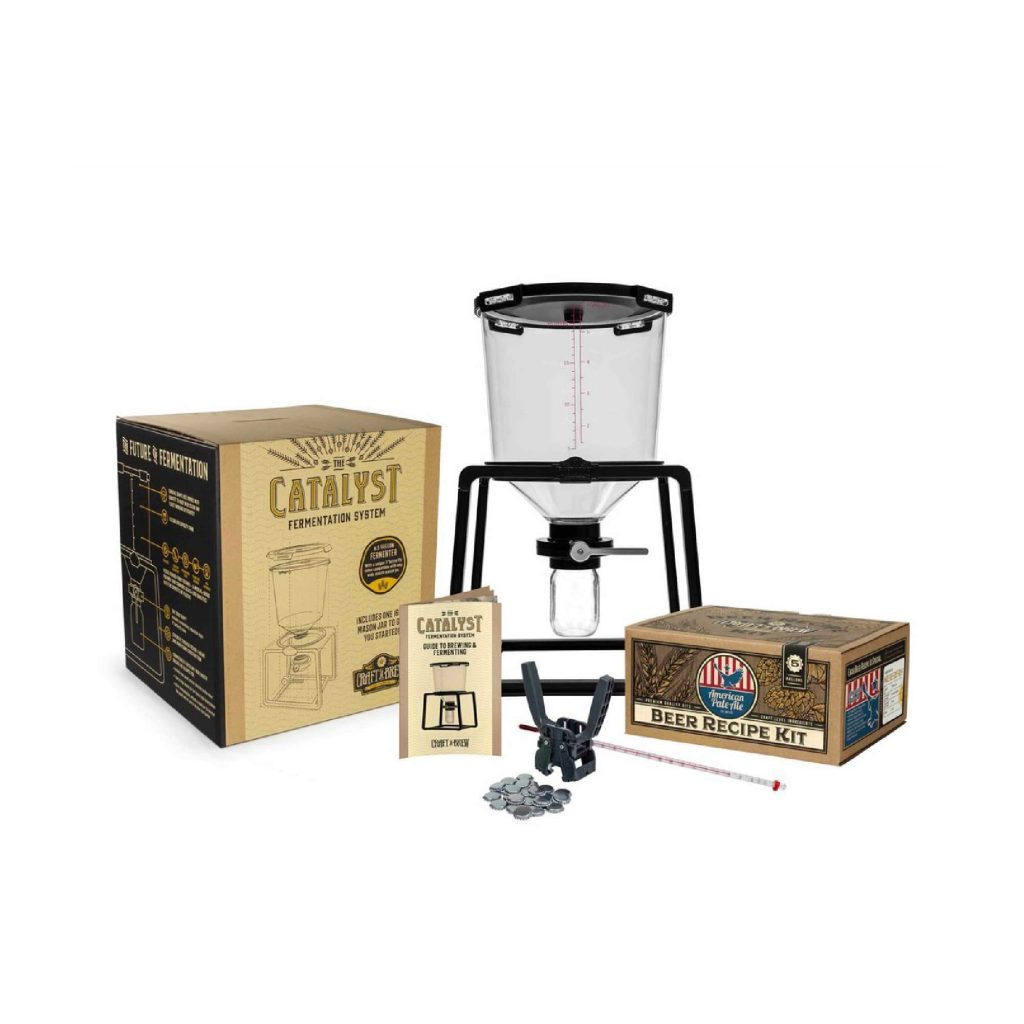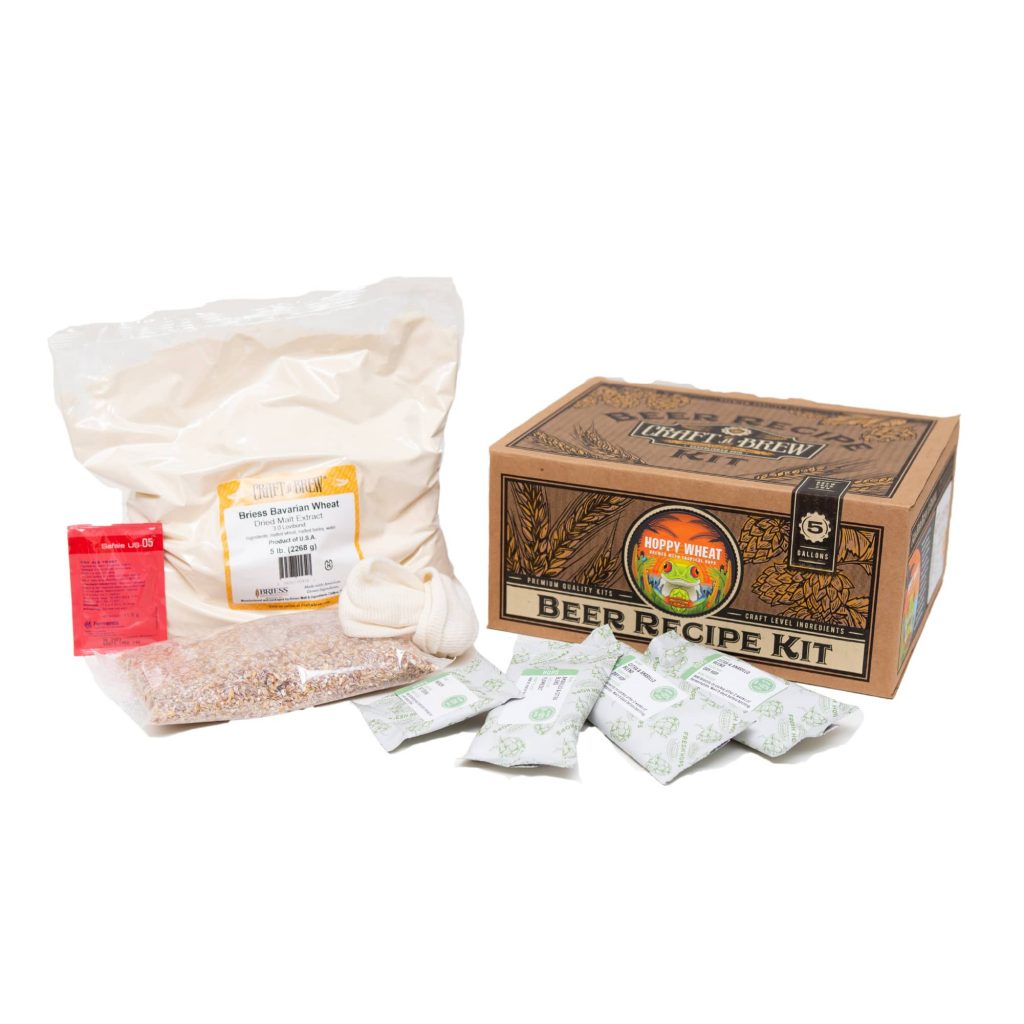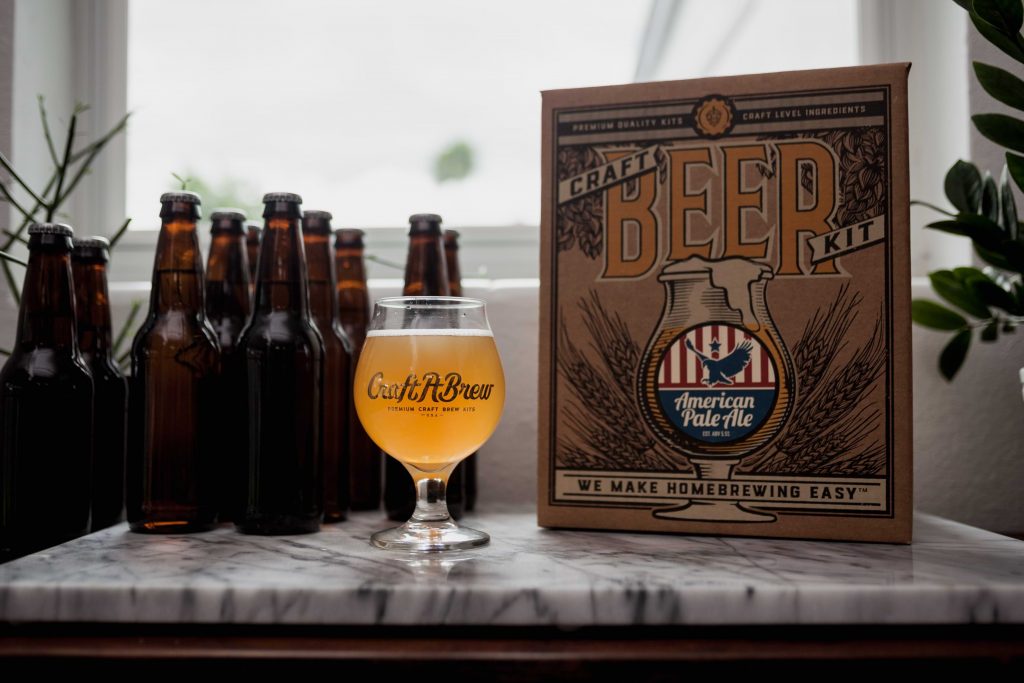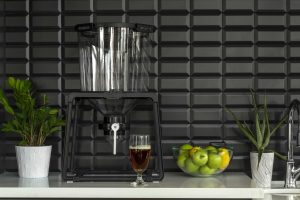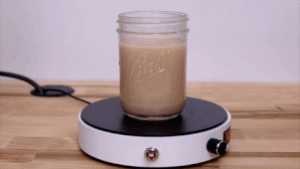
21 May How much is a beer kit – and will it save you money?
How much is a beer kit? (And will it save you money?)
Is brewing your own beer cheaper than buying it from the store? Is making beer at home worth it? How much is a beer kit and will I really save money in the long run? These are all valid questions if you’re considering a new homebrewing hobby. After all, cooking at home (instead of ordering take out) and making coffee at home (instead of grabbing a cup on your way to work) both save you plenty of money! Does the same go for beer?
In this post we’ll review the basic start up costs for a brand new brewer. We’ll compare the costs of homebrewed beer vs. store bought beer. We’ll also discuss the other investments your homebrewing hobby may require down the road and clever ways to save money on your new hobby.
Let’s cover a a few basic questions before diving in:
Is making beer at home worth it? Absolutely! Learning how beer is made helps you appreciate every pint you drink. Plus, sipping on a bottle of beer you made yourself is one of the most rewarding experiences for any craft beer lover.
Is brewing my own beer cheaper than buying it? You might be able to break even (or even save a little money) by brewing beer instead of buying it. Though to do so you’d have to brew large batches and brew quite often to supplement your usual craft beer ‘diet.’ Other factors to consider are the style(s) of beer you drink most often (ales vs. lagers), the method you use to carbonate your homebrew (kegs vs. bottles) and the types of ingredients you use (pre-made beer recipe kits vs. building your own recipes and sourcing your own ingredients). These factors impact the ongoing costs of your hobby and determine the final cost of each pint of homebrew.
How much will it cost to start homebrewing? The truth is you can spend as much or as little as you want on a homebrewery. You could convert your entire garage into a microbrewery or dip your toe in with a classic, user-friendly starter kit. Starting with a kit is a great way to get everything you need in one place. We’ll dive into the cost of a homebrew starter kit as well as the ongoing costs or future upgrades & investments many homebrewers make.
Okay, let’s get into it!
How much is a beer kit? Homebrewing start up costs:
A typical homebrew kit will cost anywhere from $40 – $250, depending on the volume (starter kits commonly come in 1 or 5 gallon sizes), type of equipment included (a plastic bucket, a glass carboy or a more sophisticated fermenter) & quality of ingredients used.
Good quality beer kits will include ingredients & reusable equipment to brew your very first batch of beer. For example, Craft a Brew’s 1 gallon Beer Brewing Kit ($45 – $48) includes:
-
- 1 gallon glass carboy
- Funnel
- Racking cane & filter tip
- Transfer tubing & tube clamp
- Airlock
- Thermometer
- Sanitizer
- Instructions
- Beer Making Ingredients
Our blog post, “Which home brew kit is the best for beginners,” compares the top 1 gallon brew kit brands so you can find the best one for you!
Beyond a beer making kit you’ll also need a few items, which you likely already have at home:
-
- A large stock pot for brewing
- Bottles & caps for carbonation
COST CUTTING TIP: No need to buy special bottles for your homebrew – just save pry-off beer bottles as you drink beer at home. Pry-off beer bottles can be reused to carbonate your homebrew! Hold on to your empties and you’ll never need to spend a dime on bottles. Just source a Capping Kit (includes a Capper Tool & Crown Bottle Caps) for around $20 to seal your bottles.
If want to start a larger home brewery Craft a Brew’s all-inclusive 5 gallon Beer Brewing Kit ($249.99) includes a 5 gallon fermenter, beer making ingredients and several accessories to get you started:
-
- The Catalyst Fermentation System
- Capping Kit
- Thermometer
- Sanitizer
- Instructions
- Beer Making Ingredients
After your first batch the recurring costs of homebrewing become cheaper since you’re just replenishing ingredients.
Craft a Brew 1 gallon beer recipe kits (ingredient refills) range from $15 – $18. That works out to about $1.50 – $1.80 per 12oz bottle (~10 bottles per 1 gallon batch).
By comparison, 5 gallon beer recipe kits range from $35 – $55. That works out to $0.70 – $1.10 per 12oz bottle (~50 bottles per 5 gallon batch).
As you can see your cost per beer is less when brewing larger volumes. You’ll spend the same amount of time brewing 1 gallon or 5 gallons of beer, so if you’re looking to save money and keep your beer fridge stocked a 5 gallon beer kit may be the best fit.
Let’s see how this compares to store bought beer (& where the savings kick in).
The costs of homebrewed beer vs. store bought beer
How much is a beer kit going to cost vs. how much is store bought beer going to cost? For this analysis let’s use a few baseline figures.
-
- Let’s say the average six pack of craft beer runs you $8 – $12.
-
- Let’s say that you enjoy 1 six pack per week (this might be a conservative benchmark with so many delicious beers on the market today).
This means that on average a craft beer drinker spends about $416 – $624 annually on beer – roughly 29 gallons of beer! Now let’s break down the annual cost of 29 gallons of homebrewed beer.
The costs of 1 gallon homebrews vs. store bought beer
First let’s analyze a 1 gallon beer kit & ingredient refills like Craft a Brew’s 1 gallon Craft Beer Kit & Craft a Brew’s 1 gallon Beer Recipe Kits.
The costs of 5 gallon homebrews vs. store bought beer
Many beer brewing kits come in 5 gallon volumes so you can get more beer out of each brew day. Let’s analyze a 5 gallon beer kit & ingredient refills like Craft a Brew’s New Brewer Starter Kit & Craft a Brew’s 5 gallon Beer Recipe Kits.
To crank out ~29 gallons of craft beer at home, you’ll need to brew six 5 gallon batches of beer in a year. Brewing larger volumes means you’ll only need to brew every other month to supplement or replace your store bought beers. 5 gallons of homebrew yields about 50 bottles so you’ll be stocked for quite some time.
-
- Up front cost for beer kit & first gallon of beer: $249.99
- $4.99 per bottle
- Up front cost for beer kit & first gallon of beer: $249.99
-
- Cost for subsequent 5 gallon batches: $35 – $55 each ($175 – $275 for the year)
- $0.70 – $1.10 per bottle
- Cost for subsequent 5 gallon batches: $35 – $55 each ($175 – $275 for the year)
ESTIMATED ANNUAL
HOMEBREWING COSTS
$502 – $610
ESTIMATED ANNUAL
CRAFT BEER COSTS
$424.99 – $524.99
Bottom line: unlike cooking your meals or brewing your coffee at home, you aren’t going to save a significant amount of money by brewing beer at home. You won’t save enough money to go on a vacation, but you can see that a homebrewing hobby isn’t much more expensive than what you’d spend on store bought brews! But if your favorite brews are light domestic lagers or crisp, refreshing import pilsners then you may be better off buying instead of brewing.
The costs of brewing ales vs. lagers
How much is a beer kit going to save you if you only drink lagers? Short answer: not much.
If you’re strictly a lager or pilsner drinker you’re likely better off sticking to your favorite store brand. Lagers (like Budweiser, Coors, Stella & Heineken) are fermented with specialty lager yeast, which requires extremely cold & precise fermentation temperatures. This usually requires an investment in specialty equipment, which makes lagers less affordable to craft at home.
By contrast, lagers are quite cheap to produce commercially, which is why your favorite domestic lager still costs less than a 6 pack of craft ales. Acquiring the chilling & fermenting equipment needed to replicate these crisp, refreshing beers isn’t so easy (or affordable) as a homebrewer.
Considering most lagers & light lagers on the market are super affordable, attempting to homebrew lagers will certainly end up costing you much more than picking up a case at the store.
If you enjoy drinking ales, which encompass nearly every other beer style, then homebrewing will be more cost effective. Styles like hefeweizen, IPA, stout, porter, blonde, Belgian, saison and more are all easily fermented at home. Because ale yeasts thrive in ambient or warmer temperatures they are easily brewed and fermented at home without temperature control devices.
All in all, if you’re a die hard lager drinker, homebrewing is NOT going to save you money. In fact, the investments required to brew great tasting pilsners at home will cost you a pretty penny. So if your goal is to save money, you’re better off leaving lagers to the pros.
Pre-made recipe kits vs. creating your own
Think of homebrewing with a beer recipe kit like using a meal kit delivery service. When you’re first learning to cook (or if you’re just busy) it’s helpful to have someone come up with the recipes and measure everything out for you. Starting with a tried and true recipe kit sets you up for successful, delicious homebrews while you learn the ropes.
Pre-built recipe kits contain packaged and measured hops, grains & yeast plus step-by step instructions for crafting a beer from start to finish. Everything you need comes in one box so you don’t have to source equipment and ingredients all over the web. These starter kits are how most homebrewers jumpstart their hobby.
Eventually you can work your way up to building your own beer recipes by buying ingredients in bulk (which can save you money in the long run). Sourcing your own ingredients is cheaper in the long run, but also will require some other investments like bulk storage to keep volatile ingredients fresh and a grain mill to crack open the malted barley husks in preparation for brewing. Sourcing ingredients for your own recipes is thrilling, but you may find that purchasing yeast from one supplier, malt from another and yeast from yet another can add up quickly.
COST CUTTING TIP: Get more bang for your yeast buck! When you begin to build your own beer recipes you can reuse yeast for multiple batches. With a fermenter like The Catalyst Fermentation System you can easily collect & harvest yeast to pitch in multiple beers. Read more about conical fermenters & reusing yeast in our blog post: What is a conical fermenter?
The costs of carbonation – bottling vs. kegging
Most brewers get their start with good old fashioned beer bottles. They’re easy to come by, they’re reusable, trusted and – most importantly – cheap.
Bottling 1 gallon batches of beer (roughly 10 bottles) is manageable, but can be a tedious process. Single use bottle caps will run you about $3/bag of 50 and a capper tool can range from $20 – $50. Alternatively you can use swing top bottles and never buy bottle caps OR a capper!
As a 5 gallon brewer you may grow tired of bottling 50 beers at a time. While bottling is budget-friendly, it does require more time to hand cap each bottle AND time for the beer to carbonate inside). Beer can carbonate in as little as a few days in a keg vs. 2 weeks in bottles.
Kegging, on the other hand, saves a lot of time. Beer is ready to drink sooner. You only have to clean & fill ONE vessel (instead of 10 – 50 bottles) and you’ll have much more control over carbonation levels.
Kegs do require much more investment. Instead of using table sugar to naturally carbonate beer in bottles, kegs force carbonate your beer using CO2. A kegging setup does require you to source a few components:
-
- Regulator
- Connections & fittings
- Hoses (for gas & liquid)
- CO2 tank
- Kegerator (cooler, fridge or other chamber to house & chill the keg and dispensing lines)
The upfront costs of kegging can exceed $200 and there are recurring costs associated with refilling CO2 after every few batches. Beyond cost, you’ll need to also consider storage. Kegs are larger and require cold storage for dispensing the beer. Unlike a few bottles of homebrew that you can stash in the fridge, a keg usually requires a kegerator or keg box (aka Keezer). This chamber keeps the keg and the hoses cold so that beer is dispensed at chilly drinking temperature – just like at your favorite brewery!
COST CUTTING TIP: You can often find kegs second hand for as little as $50! You can find used kegs at your local homebrew shop or elsewhere online. We recommend purchasing in person so you can closely inspect.
For more detailed information on building your keg set up, read BYO’s article HERE.
The costs of other homebrewing investments & equipment
Some people build a $1000+ home brewery in their basement. Some people have been brewing for years with an under-$100 operation on their kitchen counter. You can brew damn good beer with any set up. Like any hobby you may find yourself looking for upgrades, accessories, tools & equipment to save you time & energy and improve the quality of your brews.
Some other homebrewery upgrade costs you may want to plan for in the future include:
-
- Hydrometer ($8) – a tool to measure your beer’s exact ABV.
-
- Auto-siphon ($10) – an accessory that makes bottling day much faster.
-
- Hop straining bags / hop spider ($4.50 – $20) – these fine mesh bags or strainers help keep hop debris out of your brew kettle or fermenter.
-
- Wort aerator ($3 – $60+) – a tool to oxygenate your wort (unfermented beer) to prepare it for yeast. Use a primitive plastic tool or a sophisticated tool to get the job done.
-
- Upgraded fermenter ($13 – $800+) – whether you’re looking to increase your output or are looking for a more sophisticated set up, you’ll likely find yourself adding or replacing the fermenter(s) in your brewery.
-
- Larger brew kettle ($50 – $200) – if you anticipate stepping up your output, a larger brew pot will be necessary. You can buy a large stock pot OR you might invest in one with a spigot for easy transfers and draining.
-
- Wort chiller ($50 – $200) – an accessory that quickly chills fresh brewed beer to yeast pitching temps quicker, shaving time off brew day & greatly reducing the risk of contamination.
-
- Stir plate ($30 – $60) – a piece of equipment that helps prepare a healthy yeast starter for fermentation – especially important if you plan to harvest and reuse yeast.
- Stir plate ($30 – $60) – a piece of equipment that helps prepare a healthy yeast starter for fermentation – especially important if you plan to harvest and reuse yeast.
-
- Temperature control ($15 – $1300+) – one of the biggest advantages commercial breweries have over homebrewers is temperature control. Precise temperature maintenance helps yeast perform at its best for the best tasting beers. If you plan to brew year round and live in an area where the temperatures fluctuate this may be an important investment worth budgeting for. In chilly winter months you might find that your beer needs a heat belt to prevent the yeast from going dormant. In hot summer months a glycol chiller or chest freezer might be necessary to prevent off flavors in your beer.
- Temperature control ($15 – $1300+) – one of the biggest advantages commercial breweries have over homebrewers is temperature control. Precise temperature maintenance helps yeast perform at its best for the best tasting beers. If you plan to brew year round and live in an area where the temperatures fluctuate this may be an important investment worth budgeting for. In chilly winter months you might find that your beer needs a heat belt to prevent the yeast from going dormant. In hot summer months a glycol chiller or chest freezer might be necessary to prevent off flavors in your beer.
So, how much is a beer kit going to save you?
Bottom line: homebrewing is a hobby – one that may never ‘pay for itself,’ but certainly one that doesn’t have to break the bank. You can absolutely brew great beer on a budget – thousands of brewers do – and you’ll likely create some brews that blow your local brewery out of the water.
Have questions about starting your homebrewing journey? Email our team of craft beer geeks at support@craftabrew.com & we’ll be happy to help get you started!
